You may have heard of the incentive programs that the federal government has created to try to entice first time home buyers into the real estate market, but how much do you really understand?
The First-Time Home Buyer Incentive makes it easier for you to buy a home and lower your monthly mortgage payments. If you qualify, you may be eligible to borrow 5 or 10% of the purchase price of a home. You pay back the same percentage of the value of your home either when you sell it or within a 25-year window.
It works like this:
- You receive a 5% incentive of the home’s purchase price of $200,000 ($10,000). If your home value increases to $300,000 your payback would be 5% of the current value ($15,000).
- You receive a 10% incentive of the home’s purchase price of $200,000 ($20,000). If your home value decreases to $150,000, your repayment value will be 10% of the current value ($15,000).
Keep in mind, this incentive is for FIRST-TIME homebuyers. It may seem obvious, but you’re considered a first-time homebuyer if:
- you have never purchased a home before
- you did not occupy a home that you or your current spouse or common-law partner owned in the last 4 years
- you have recently experienced the breakdown of a marriage or common-law partnership (even if you don’t meet the other first-time home buyer requirements)
Are you eligible?
Take a look at the following to determine your eligibility for the First-Time Home Buyer Incentive:
- you have your minimum down payment (usually 5% of the purchase price)
- your total annual qualifying income doesn’t exceed $120,000
- your total borrowing is no more than 4 times your qualifying income
- you or your partner are a first-time homebuyer
- you are a Canadian citizen, permanent resident or non-permanent resident authorized to work in Canada
Basically, the Incentive functions like a second mortgage on your home. Your first mortgage must be greater than 80% of the value of the property and will therefore be subject to a mortgage loan insurance premium through a company such as Canada Guaranty, CMHC or Genworth. That insurance premium is based on the loan-to-value ratio of the first mortgage only. You don’t pay mortgage insurance on the FTHBI – it is included with the total down payment.
The type of home you plan to purchase plays a factor. The table indicates the type of home that qualifies for the incentive and how much of an incentive it may be eligible to receive.
| PROPERTY TYPE | INCENTIVE AMOUNT(%) |
|---|---|
| New Construction | 5% or 10% |
| Existing Home | 5% |
| New and existing mobile/manufactured home | 5% |
Residential properties can have 1 to 4 units and include:
- single family homes
- semi-detached homes
- duplex
- triplex
- fourplex
- town houses
- condominium units
- mobile homes
The bottom line: Your property must be located in Canada and must be suitable and available for full-time, year-round occupancy. Your home is for you to live in and CANNOT be used as an investment property.
Other details you need to know:
 The following additional costs may apply:
The following additional costs may apply:
- Additional legal fees: Your lawyer is closing 2 mortgages so you may be charged higher fees.
- Appraisal fees: To repay your incentive, you may need to have an appraisal done to determine the fair market value of your home.
- Other fees: Additional fees may be incurred throughout the life cycle of the incentive, like switching your first mortgage to a new lender or refinancing your first mortgage.
Use this calculator to find out if you qualify.
Here’s an example:
Susan wants to buy a new home for $400,000 and has saved the minimum required down payment of $20,000 (5% of the purchase price).
Under the First-Time Home Buyer Incentive, Susan can apply to receive $40,000 in a shared equity mortgage (10% of the cost of a new home) through the program.
This lowers the amount Susan needs to borrow and reduces the monthly expenses.
As a result, Susan’s mortgage is $228 less a month or $2,736 a year.
Ten years later, Susan sells the home for $420,000. The Incentive must be repaid as a percentage of the home’s current value.
This results in Susan repaying 10%, or $42,000 when she sells the house.
Repayment Details
The Incentive must be paid in full – that is no partial payment – after 25 years or when the home is sold. There are a few areas where changes to the Incentive can trigger early repayment:
- You go through a break up and you want to buy out the co-borrower. If this requires additional insured funds, you must pay back the Incentive in full.
- Porting your mortgage will trigger a repayment of the Incentive.
- A partial release of security is considered a sale and will trigger repayment of the Incentive.
- A change in the intended use of the property (ie: from primary residence to income property)
How Do I Apply?
There are a few steps to be completed before applying for the FTHBI.
First, get pre-approved for a mortgage. Once you’ve found a home you want to purchase and have determined you’re eligible for the incentive, you’re ready to apply. All you need to do is fill out BOTH of the application forms below and give them to your lender who will submit the application for you.
FTHBI – SEM Information Package (PDF)
SEM Attestation and Consent Form (PDF)
Give the final signed copy of the shared equity mortgage package to your solicitor to retain on your behalf.
When you receive your acceptance, call First Canadian Title at 1-833-974-0963 to activate your incentive and provide the name of your lawyer/notary. (This must be at least 2 weeks prior to your closing date.)





